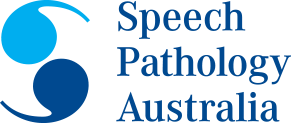As speech pathology students, you are learning so many new terms. Sometimes the terminology can be very confusing. You feel uncertain if you are using them correctly.
The terms “phonics”, “phonetics”, “phonological awareness”, “phonemic awareness”, “phonemes”, and “phonological therapy” sound similar. Do you know the difference? In this blog we will explain these terms and build your confidence on your school-based placement.
For a communication focussed degree, we sometimes fail to communicate these meanings clearly.
Want more clarity?
You’ve come to the right place. We’re here to explain the meanings of these words. Also, we give the context for when you would use each word.
What is phonics?
Speech pathology students often confuse phonics and phonological awareness. It’s understandable. A lot of teachers and parents use the terms interchangeably. Soon, you can help educate them on the difference. The word “phonics” refers to the relationship between written letters and their corresponding sounds. For example, knowing that certain combinations of letter names represent specific sound values is an example of phonics.
Students have to learn how to crack the alphabet code to be able to read and spell. This is phonics. As students’ learning of phonics improves, they understand the concepts such as:
- Letters represent sounds
- One sound can be represented with two or more letters. For example, we use two letters for the sound “sh”.
- One letter can represent more than one sound. For example, the letter “a” represents different sounds in “apple” and “small”.
At TalkHQ, we encourage speech pathology students to attend a Sounds Write course when you graduate.
What is phonological awareness?
Phonological awareness refers to another skill set required for literacy development. It refers to the sounds in words.
Phonological awareness skills include:
- segmenting words in sentences
- rhyming words
- segmenting syllables
These abilities underpin reading and writing, and are critically important for literacy learning. Phonological awareness also includes phonemic awareness skills. Phonemic awareness is includes more complex skills such as
- blending sounds to make words. For example, b-a-t sounds blend to make “bat”.
- segmenting words into individual sounds
- manipulating sounds. For example, change the “c” to a “m” in the word “cat”. What is the new word?
which refer specifically to the ability to pick out individual sounds from written or spoken words (i.e. the word ‘cat’ contains the sounds /k/, /æ/, and /t/).
For more information on how children learn to read, check out this blog.
What is a phoneme?
The word phoneme refers to speech sounds. A phoneme is a specific and distinct speech sound used in spoken language, like /t/, /k/, /n/ or /ʃ/. Speech sound errors are talking about errors with saying specific phonemes correctly in words.
What is a phonological error and/or phonological therapy?
Phonological errors are patterns of speech sound errors. Typically, one speech sound (phoneme) is replaced by another. For instance, the phoneme /k/ is replaced with /t/ in the error word ‘tat’ (said instead of ‘cat’). Phonological therapy, consequently, refers to a therapy approach that targets speech sound error patterns (e.g. minimal pairs or multiple oppositions).
Speech pathology students typically learn more about these therapy approaches in second year of the degree and on placement.
How did we go with explaining these ones? Let us know in the comments whether you’ve had a metaphorical lightbulb moment, or whether you’re still stumbling around in the dark!







